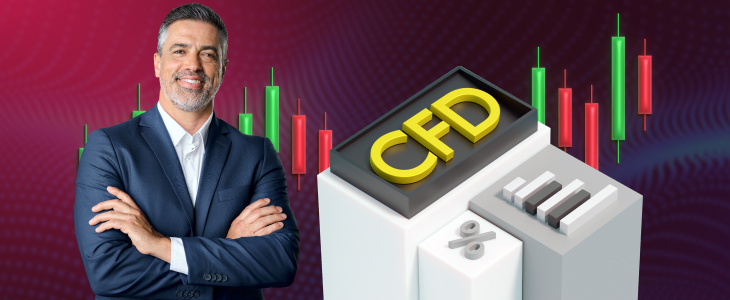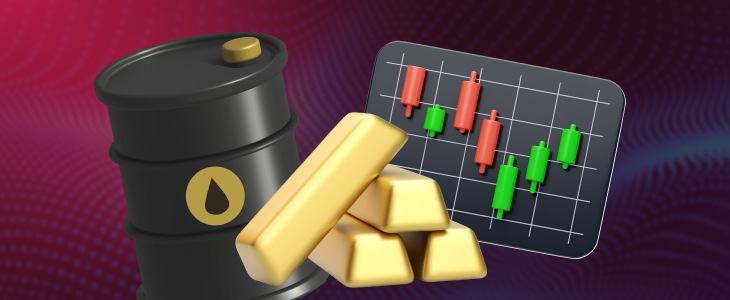In light of our current dynamic commercial landscape, the capability to diversify among asset types is no longer an option, but a necessity. Unified CFD platforms now allow both institutional and retail traders to access multiple assets efficiently, offering the speed, access, and flexibility they require for modern trading operations.
Moreover, the unified CFD (Contract for Difference) has emerged as a popular mode of trading with your assets. Additionally, it generally functions as an efficient evolution in commercial technology, which helps traders and investors trade with various facilities. For instance, they are typically gold, oil, forex, and many more.
In this article, we will discuss the rise of unified CFD platforms that offer assets such as oil, gold, and forex under a single interface.
The Conventional Market Fragmentation
Previously, different trading asset classes were primarily represented by various platforms or trading brokers. For example, if a trader wanted to speculate on the gold asset, they would require access to a commodity trading facility.
Alongside, oil might also require a separate account alongside the forex trading facilities. Moreover, if we specifically discuss the forex market, where various liquidity models have an impact, it would also require its own specialized platform for operations.
Nonetheless, the following fragmented experience has developed several inefficiencies, such as:
- Data feeds and disjointed charts.
- Different logins.
- Larger price through commissions, spreads, and software subscriptions.
- Complicated portfolio regulations and risk management.
These restrictions made it more difficult for traders and investors to respond directly to international macroeconomic changes. Moreover, these macroeconomic shifts can also impact different asset types or classes simultaneously. For example, they are intergovernmental pressures, central bank decisions, and supply chain disruptions.
How Do You Explain The CFDs?
CFDs are derivative instruments that enable investors and traders to speculate on price changes without requiring ownership of the underlying asset. Additionally, without purchasing a single ounce of gold or a barrel of oil, they can open a trading position.
Moreover, Contract for Differences (CFDs) will enable them to open a position based on whether they believe the price of the asset will fall or rise. There are also various key advantages of CFD trading you can get, such as:
- Leverage that magnifies both gains and losses.
- Available internationally all five times a week.
- Short-selling abilities.
- Low capital necessities.
- No requirement for ownership or physical delivery.

The Emergence of Unified CFD Platforms
Over the last decade, there has been a rise in fintech innovations that have led to the development of unified CFD platforms. These are primarily interfaces that allow traders or investors to buy or sell various commodities. For instance, you can refer to other currencies, oil, gold, and even crypto assets from a single login.
The advantages of unified CFDs are mainly ideal for short-term and speculative traders.—especially those who are looking to capitalise on trends and volatility across different asset classes.
Various Features And Benefits of Unified CFD Platforms
The unified platforms can incorporate different assets and markets into a single environment. And here is how they can shift the trading experiences of forex market traders:
Inclusive Market Availability
There are various factors and facilities that a unified CFD platform brings together, such as:
- Indices: S&P 500, Dow Jones, DAX, FTSE, etc.
- Forex pairs: EUR/USD, USD/CHF, and GBP/JPY.
- Commodities: Oil (Brent and WTI), Gold (XAU/USD), and Silver.
- Cryptocurrencies: Ethereum, Bitcoin, and Litecoin.
- ETFs and stocks in some instances.
Efficient User Experience
Unified CFD platforms can offer traders a smooth UI (User Interface) where they can view the prices of different assets such as gold and silver. The interface will also allow them to execute trades on the EUR/USD pair while observing the Brent crude futures, all from a single dashboard.
Moreover, with this facility, traders from various platforms, such as MetaTrader 4 or online trading platforms, can operate their trading seamlessly. For example, they will not need to learn about several trading systems or switch between different interfaces.
Multi-Asset Analysis
Traders from different platforms can apply for similar facilities. For instance, they are charting tools, technical indicators, and tactics across various asset types.
Moreover, this facility is primarily ideal for macro traders who track movements between oil, gold, and forex markets. Nonetheless, here are some examples:
- The devaluation of the USD sometimes causes the gold prices to increase.
- Oil price surges can affect inflation probabilities, which in turn can impact currency valuation.
Risk Management Incorporation
Various consolidated risk tools allow you to manage your portfolio risk optimally and inclusively. Moreover, some of these tools rely on stop-loss, take-profit, and margin observation, among other features.
Instead of regulating different asset classes in a silo, traders can observe their entire exposure and control positions efficiently.
Capital Efficiency
Rather than splitting capital across different brokers and platforms, the unified CFD interfaces operate uniformly. For instance, they generally allow users to improve various factors in their trading operations.
For instance, you can refer to margin necessities, decreased capital efficiency, enhanced adjustability, and many more.

In Conclusion
We can observe a significant impact in retail and institutional trading with the emergence of unified CFD platforms. This facility consolidates assets such as gold, oil, and foreign exchange under a single interface, enabling strategic thinking and reflecting the interconnected nature of modern markets.
Also, for active traders, there has never been a more flexible, versatile, or powerful toolkit than the unified CFD platforms. If operated properly, they can open various paths for both traders and investors.
Finding a reliable trading source for managing your assets and trading operations can be hectic. This is why we are introducing our FXcess platform, which offers various trading advantages to ensure optimal operations. For example, they are affordable assets, reliable brokers, and many more.
FAQs
1. Can you consider gold as a CFD or Forex?
– You can trade gold both as a commodity through a CFD or in the forex platform by implementing the XAU/USD pair.
2. How can you explain CFD in oil trading?
– You can refer to oil trading in terms of CFD trading as a commercial agreement that allows you to profit from the price fluctuations.
3. What would happen to oil CFD if the prices go up?
– If the oil price rises, the CFD value can also increase while reflecting the underlying market movement.
4. How can you trade CFD on gold?
– For trading CFD on gold, you initially need to open and fund a profile with a regulated CFD broker.
